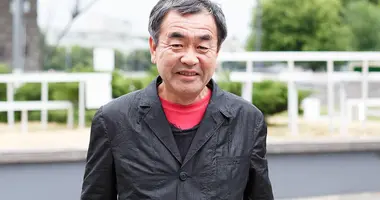Where to enjoy the autumn leaves in Japan
- Published on : 27/05/2024
- by : K.C.
- Youtube

Arashiyama bridge
Admire the colors of autumn
This fall, Japan Experience shares its selection of the best places to enjoy the Japanese phenomenon of koyo, when the natural landscape is transformed and the leaves turn red. From north to south, discover places to see autumn leaves in every region of Japan.
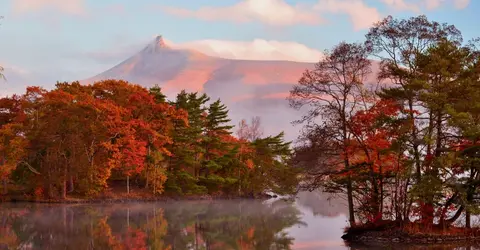
Hokkaido
- Onuma Park
About twenty kilometers north of Hakodate lies Onuma Park. Covering an area of 90 km², it is the ideal place to go on an "autumn leaf hunt" (momiji gari). Every year, the vegetation begins its transformation in mid-October. We advise you to visit the park during the second half of October to admire its magnificent maples, beeches and red oaks. Don't miss the lake view from Shuho Komagatake (1,131 meters); it is breathtaking!
Access: Onuma-cho, Nanae-cho, Kameda-gun, Hokkaido 041-1354. By train, get off at Onuma koen station; 20 min from Hakodate by JR Express train.
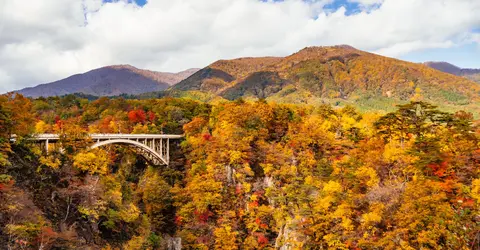
Tohoku
- The Gorges of Naruko (Narukokyo)
Parallel to National Highway 47, the V-shaped valley was formed by the erosion of the Oya River. The cliff, about 100 meters high, continues for 2.5 kilometers between pines and rocks. In the autumn, buses run between Naruko onsen and Nakayamapei onsen stations. In the Naruko Valley, trees turn orange in mid-October. The best time to visit the gorge is from mid-October to the beginning of November. You can admire vine leaves (acer rufinerve) and flowering shrubs called koshiabura (chengiopanax sciadophylloides). Narukokyo Resthouse has an observation deck with a magnificent view of the Ofukazawa Bridge and Naruko Gorge.
Access: Naruko onsen, Omiya-shi, Miyagi-ken. 10 min walk to JR Naruko onsen station or 5 min walk to JR Nakayamadaira Station.

Mount Takao, near Tokyo.
Pember_
Kanto
Mount Takao is a mountain rising to 599 meters above sea level and is located in the almost national park of the Meiji-Takao Forest; one of the smallest parks in the country, covering only 7.70 km 2 . Although small in size, it includes 1,200 species of plants, a hundred species of wild birds and more than 5,000 species of insects! The best time to visit Mount Takao and admire its Japanese maples (Acer palmatum) and Japan varnishes ( yama-urushi , toxicodendron vernicifluum ) is throughout the month of November.
Access: By train, take the JR Chuo line to Takao station (terminus) or take the Keio line to Shinjuku, to Takaosanguchi station, with a change to Kitano station.

Koshinetsu
- Nishizawa Valley
The Nishizawa Valley is part of the Chichibu-Tama-Kai National Park and covers 1,250 km2 in the prefectures of Yamanashi, Saitama, Nagano and Tokyo. Don't miss the sumptuous five-story waterfall, Nanatsugama Godan no Taki, it's a must see! The best time to enjoy the red leaves is between mid-October and early November. Here you can admire different species of maples, beeches, Japanese larches (Larix kaempferi), Mongolian oaks (Quercus mongolica) and Japanese sorbus (sorbus commixta).
Access: Mitomi Kawaura, Yamanashi. By bus from Yamanashi station, about 60 min.
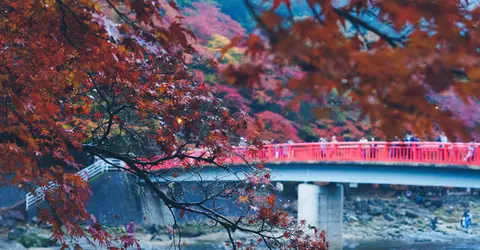
Tokai
Around 1634, the eleventh priest of Koseki-ji temple began cultivating various trees in the area. From the Taisho era (1912-1926) to Showa era (1926-1989), volunteers planted more trees: the many varieties of different maples would reach 4000! It's advisable to visit Korankei Gorge during the second half of November. Don't miss Yufuibashi bridge and the momiji tunnel.
Access: Aki-cho, Toyota-shi, Aichi. From Nagoya Station, take Meitetsu Nagoya Line and get off at Higashi-Okazaki (30 min). Then take a Meitetsu bus to Korankei (60 min).
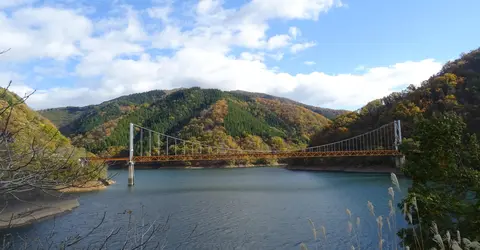
Hokuriku
- Lake Kuruzyu
By mid-October, the vegetation around Lake Kuzuryu is tinged with orange. The reflections on the blue of the lake offer an interesting contrast with Kakogase bridge, suspended over the lake. The difference in temperature between day and night varies the red of the trees. You'll find cherry trees, beeches and maples among the trees that you can observe.
Access: Hakkase, Ono-shi, Fukui-ken. From Kuzuryurako Station, take a taxi (20 min).

Arashiyama in kôyô colors
Natt Muangsiri
Kansai
Who doesn't know the iconic landscape of Tsukihashi Bridge in Arashiyama in the fall? In this district of Kyoto, there are many spots to admire the flaming foliage of the Japanese countryside! Take the time to explore the back of Tenryu-ji Temple for example. Its garden exudes a refined beauty every season, an echo of another time. Every second Sunday in November there is the Maple Festival: a traditional Heian period fleet slowly parades down the Otagawa River, while on the ground a Kyogen Buddha and Shimabara Ota make appearances.
Access: From Kyoto, take the JR line to Saga Arashiyama.
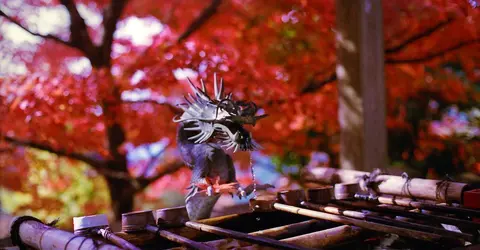
Chugoku
- The surroundings of Daisen-ji
The beech forest of Daisen is considered to be the largest in western Japan. In the surroundings of Daisen-ji Temple, enjoy the most beautiful colors of the Japanese autumn: beeches, oaks and maple trees color the landscape. From October 20th to November 5th, it's "Autumn Week" in Daisen: illuminated paintings and illuminations of the koyo await you!
Access: Daisen, Daisen-cho, Saihaku-gun, Tottori-ken. By car, an hour from Matsue.
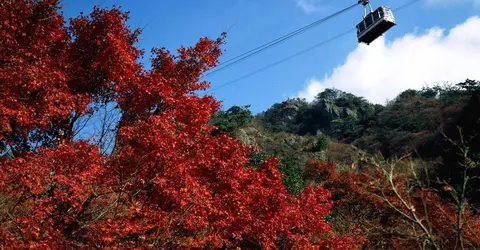
Shikoku
- Kankakei Gorge
Kankakei is considered one of the three most beautiful natural sites in Japan and one of the best tourist sites in the country. The cable car crossing the deep valley was renovated in July 2015, and you can enjoy a view of the beautiful ravine of Kanazawa ridge and the Seto coast from the cable car window. Don't miss the autumn leaves, koyo, along the rocks around the Kanji River. The Japanese mountain cherry, green and fresh at the beginning of summer, is also very popular throughout the year.
Access: 168, Kankakei-dori, Shodoshima-cho, Shozo-gun, Kagawa-ken. By bus, from Kusakabe, get off at the cable car stop (15 min).

Kyushu
Mt. Naka-dake (1791 meters) is the highest peak Kuju Mountains. The Kuju mountain range is one of the "100 most beautiful mountains of Japan". In autumn, the green peaks give way to mountains of fire, matching the Chinese reeds (Miscanthus sinensis). The Kuju Mountains are best visited from late October to mid-November.
Access: Kuju-cho, Taketa-shi, Oita-ken. By train from JR Bungo Takeda Station, take the bus (30 min) to Kusumi Shisho Station. From here, a 10-minute drive is needed. By bus, from the same station, it takes 45 minutes to get to Senninzuka and then 15 minutes by car.

